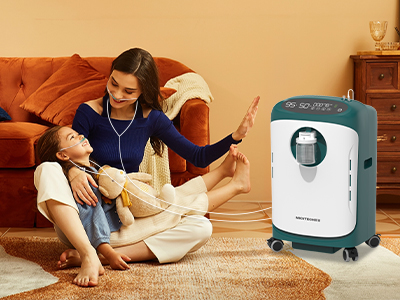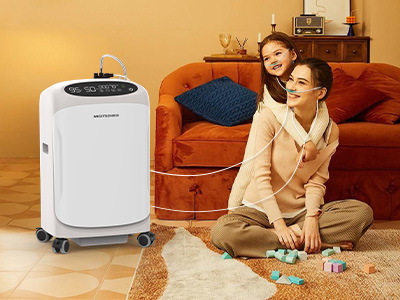30 May 2025
Childhood is meant to be a whirlwind of curiosity, scraped knees, and endless motion. For children on oxygen therapy, maintaining that rhythm takes a delicate balance between energy and breath. The need for supplemental oxygen doesn’t mean pressing pause on play—it means finding new ways to keep the spark of activity alive.
With the right support, tools, and mindset, kids can remain active, adventurous, and joyfully uninhibited—even with a nasal cannula in tow.

Understanding Pediatric Oxygen Therapy
Children may require oxygen therapy for a host of reasons: chronic lung conditions like bronchopulmonary dysplasia, congenital heart defects, severe asthma, or post-viral respiratory complications. Unlike adult lungs, children’s respiratory systems are still developing, making oxygen supplementation a critical bridge to healthy growth.
Oxygen therapy ensures their brains and bodies receive consistent oxygen levels to fuel development, ward off complications, and support normal functioning during everyday activities.
The Importance of Physical Activity for Kids
Movement is not a luxury—it’s a biological imperative. Physical activity strengthens muscles, boosts cardiovascular health, and fortifies the immune system. For kids on oxygen therapy, it's also a mood enhancer and confidence builder.
Regular movement improves concentration, lowers anxiety, and fosters a sense of capability—particularly important for children who may feel different because of their medical needs.
Types of Oxygen Equipment for Active Kids
Today’s pediatric oxygen tools are a far cry from clunky tanks and restrictive cords. Portable oxygen concentrators (POCs) are compact, lightweight, and rechargeable—perfect for playdates and park visits. Portable cylinders with backpack carriers also make mobility feasible for smaller frames.
Pediatric nasal cannulas are designed for comfort and flexibility, often with soft tubing and adjustable straps that allow children to move without distraction or discomfort.
Creating a Safe Environment for Play
Safety doesn’t mean sacrificing fun. Indoors, open areas free from tripping hazards and sharp corners are ideal. Soft flooring, such as rugs or foam mats, provides added protection. Ensure oxygen tubing is secured and doesn’t pose a strangulation or tripping risk.
Outdoors, plan around weather—cold air can constrict airways, and heat may exacerbate fatigue. Always keep a backup oxygen source, hydration, and pulse oximeter nearby when venturing out for extended periods.

Activity Ideas Tailored to Oxygen Therapy
Children on oxygen therapy can still dance, paint, tumble, and chase bubbles. Choose activities that are engaging yet not overly strenuous: yoga for kids, treasure hunts, swimming (with equipment temporarily removed and under strict medical guidance), or gardening.
Structured activities like adaptive sports or arts programs can offer community and consistency. Meanwhile, spontaneous play—imaginary games, light dancing, or hide-and-seek—can offer joy in small bursts.
Involving Schools and Caregivers
Ensuring continuity in care means bringing the whole village on board. Teachers, coaches, and caregivers should be educated on a child’s condition, equipment needs, and signs of distress. A clear oxygen management plan—including how to handle tubing, storage, and emergency contacts—builds confidence for all parties involved.
Schools should also make allowances for resting periods and have designated safe zones where the child can relax if they feel breathless.
Emotional Support and Encouragement
Children are exquisitely perceptive. They know when they stand out—and it can weigh on their self-esteem. Encourage independence where possible. Let them decorate their equipment, pick out colorful cannulas, or choose their activity schedule.
Equip them with kind, confident phrases to explain their oxygen therapy to curious peers. “It helps me breathe better so I can play more,” is simple, truthful, and empowering.
Monitoring and Adjusting Activity Levels
Every child’s threshold is different. Look for signs like flushed skin, breathlessness, irritability, or sudden fatigue. These cues signal the need to pause and regroup.
Work closely with healthcare providers to tailor activity levels, oxygen flow settings, and rest periods. What works one week may evolve the next—flexibility is key.
Conclusion: Breathing Joy into Every Step
Oxygen therapy is not a stop sign—it’s a green light with a thoughtful speed limit. With the right equipment, planning, and emotional support, children can run, leap, twirl, and grow like any other child. Their world need not shrink; it simply reshapes to accommodate breath.
In this journey, oxygen becomes not a symbol of fragility but a tool of possibility.
Keywords: oxygen therapy
Originally published 30 May 2025, updated 30 May 2025.